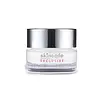What's inside
What's inside
 Key Ingredients
Key Ingredients

 Benefits
Benefits

 Concerns
Concerns

 Ingredients Side-by-side
Ingredients Side-by-side

Water
Skin ConditioningDimethicone
EmollientHydrogenated Polyisobutene
EmollientGlycerin
HumectantCetyl Alcohol
EmollientGlyceryl Stearate
EmollientPolymethyl Acrylate
Methyl Methacrylate
PEG-40 Stearate
EmulsifyingCera Alba
EmollientBeeswax
Emulsion StabilisingPotassium Cetyl Phosphate
EmulsifyingStearic Acid
CleansingStearyl Alcohol
EmollientSorbitan Tristearate
EmulsifyingTriethanolamine
BufferingCaffeine
Skin ConditioningMethylparaben
PreservativeSilica
AbrasiveSodium Benzoate
MaskingSodium Dextran Sulfate
Gel FormingMyristyl Alcohol
EmollientEscin
TonicPalmitic Acid
EmollientRhamnose
HumectantPhenoxyethanol
PreservativeAdenosine
Skin ConditioningMagnesium Ascorbyl Phosphate
AntioxidantTocopheryl Acetate
AntioxidantPoloxamer 338
EmulsifyingAscorbyl Glucoside
AntioxidantHydrolyzed Rice Protein
Skin ConditioningPentylene Glycol
Skin ConditioningWater, Dimethicone, Hydrogenated Polyisobutene, Glycerin, Cetyl Alcohol, Glyceryl Stearate, Polymethyl Acrylate, Methyl Methacrylate, PEG-40 Stearate, Cera Alba, Beeswax, Potassium Cetyl Phosphate, Stearic Acid, Stearyl Alcohol, Sorbitan Tristearate, Triethanolamine, Caffeine, Methylparaben, Silica, Sodium Benzoate, Sodium Dextran Sulfate, Myristyl Alcohol, Escin, Palmitic Acid, Rhamnose, Phenoxyethanol, Adenosine, Magnesium Ascorbyl Phosphate, Tocopheryl Acetate, Poloxamer 338, Ascorbyl Glucoside, Hydrolyzed Rice Protein, Pentylene Glycol
Water
Skin ConditioningButylene Glycol
HumectantGlyceryl Stearate
EmollientNylon-12
PEG-100 Stearate
Glycerin
HumectantSimmondsia Chinensis Seed Oil
EmollientSqualane
EmollientDicaprylyl Ether
EmollientBehenyl Alcohol
EmollientHelianthus Annuus Seed Oil
EmollientOctyldodecanol
EmollientPalmitoyl Dipeptide-5 Diaminobutyroyl Hydroxythreonine
Skin ConditioningPalmitoyl Dipeptide-5 Diaminohydroxybutyrate
Skin ConditioningPhytosterols
Skin ConditioningPolysorbate 80
EmulsifyingGlycine Soja Oil
EmollientGlycolic Acid
BufferingCaffeine
Skin ConditioningNiacinamide
SmoothingFraxinus Excelsior Bark Extract
Skin ConditioningTocopherol
AntioxidantButyrospermum Parkii Butter Extract
Skin ConditioningSucrose Polystearate
EmollientCarbomer
Emulsion StabilisingLimnanthes Alba Seed Oil
Skin ConditioningXylitylglucoside
HumectantEthylhexylglycerin
Skin ConditioningPanthenol
Skin ConditioningAnhydroxylitol
HumectantSodium Hydroxide
BufferingHydrogenated Polyisobutene
EmollientDisodium EDTA
Xylitol
HumectantGlucose
HumectantParfum
MaskingAlcohol
AntimicrobialSilanetriol
Lecithin
EmollientSoy Isoflavones
Skin ConditioningPhenoxyethanol
PreservativeWater, Butylene Glycol, Glyceryl Stearate, Nylon-12, PEG-100 Stearate, Glycerin, Simmondsia Chinensis Seed Oil, Squalane, Dicaprylyl Ether, Behenyl Alcohol, Helianthus Annuus Seed Oil, Octyldodecanol, Palmitoyl Dipeptide-5 Diaminobutyroyl Hydroxythreonine, Palmitoyl Dipeptide-5 Diaminohydroxybutyrate, Phytosterols, Polysorbate 80, Glycine Soja Oil, Glycolic Acid, Caffeine, Niacinamide, Fraxinus Excelsior Bark Extract, Tocopherol, Butyrospermum Parkii Butter Extract, Sucrose Polystearate, Carbomer, Limnanthes Alba Seed Oil, Xylitylglucoside, Ethylhexylglycerin, Panthenol, Anhydroxylitol, Sodium Hydroxide, Hydrogenated Polyisobutene, Disodium EDTA, Xylitol, Glucose, Parfum, Alcohol, Silanetriol, Lecithin, Soy Isoflavones, Phenoxyethanol
Ingredients Explained
These ingredients are found in both products.
Ingredients higher up in an ingredient list are typically present in a larger amount.
Caffeine is most associated with coffee, tea, and cacao. In skincare, it helps with calming inflammation and is rich in antioxidants.
While caffeine is used to treat cellulite and and dark circles, further studies are needed to prove this. It has been believed to help with these skin conditions due to its ability to dilate blood vessels and increase blood flow.
Some studies are looking into caffeine's ability to protect against UV rays.
Learn more about CaffeineGlycerin is already naturally found in your skin. It helps moisturize and protect your skin.
A study from 2016 found glycerin to be more effective as a humectant than AHAs and hyaluronic acid.
As a humectant, it helps the skin stay hydrated by pulling moisture to your skin. The low molecular weight of glycerin allows it to pull moisture into the deeper layers of your skin.
Hydrated skin improves your skin barrier; Your skin barrier helps protect against irritants and bacteria.
Glycerin has also been found to have antimicrobial and antiviral properties. Due to these properties, glycerin is often used in wound and burn treatments.
In cosmetics, glycerin is usually derived from plants such as soybean or palm. However, it can also be sourced from animals, such as tallow or animal fat.
This ingredient is organic, colorless, odorless, and non-toxic.
Glycerin is the name for this ingredient in American English. British English uses Glycerol/Glycerine.
Learn more about GlycerinGlyceryl Stearate is a mix of glycerin and stearic acid.
It is used to stabilize the mixing of water and oil ingredients. By preventing these ingredients from separating, it can help elongate shelf life. It can also help thicken the product's texture.
As an emollient, it helps soften skin and supports barrier-replenishing ingredients.
In cosmetics, Glyceryl Stearate is often made from vegetable oils or synthetically produced.
This ingredient may not be fungal-acne safe
Fun fact: The human body also creates Glyceryl Stearate naturally.
Learn more about Glyceryl StearateHydrogenated Polyisobutene is a synthetic polymer. Polymers are compounds with high molecular weight. Hydrogenated Polyisobutene is an emollient and texture enhancer.
In one study, Hydrogenated Polyisobutene showed better skin hydration levels than Caprylic/Capric Triglyceride. As an emollient, it helps keep your skin soft and hydrated by trapping moisture in.
Hydrogenated Polyisobutene is often used as a mineral oil replacement.
Learn more about Hydrogenated PolyisobutenePhenoxyethanol is a preservative that has germicide, antimicrobial, and aromatic properties. Studies show that phenoxyethanol can prevent microbial growth. By itself, it has a scent that is similar to that of a rose.
It's often used in formulations along with Caprylyl Glycol to preserve the shelf life of products.
Water. It's the most common cosmetic ingredient of all. You'll usually see it at the top of ingredient lists, meaning that it makes up the largest part of the product.
So why is it so popular? Water most often acts as a solvent - this means that it helps dissolve other ingredients into the formulation.
You'll also recognize water as that liquid we all need to stay alive. If you see this, drink a glass of water. Stay hydrated!
Learn more about Water